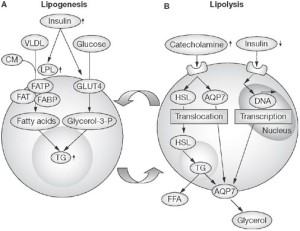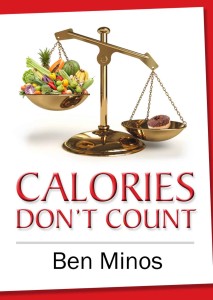TCC Science of Fat Loss Series Part 3 – How Fat Is Released
 How is Fat Released?
How is Fat Released?
In Part 2 of the Science of Fat Loss Series, we looked at how your body stores fat (Lipogenesis). This week we will look at the cellular process on how your body releases fat (Lipolysis).
As you learned in Part 2, fat is stored by tying 3 fatty acids to a glycerol backbone. This process is catalysed mainly by an enzyme Lipoprotein Lipase or LPL for short. This enzyme is in turn regulated by hormones. The main hormone being insulin.
Remember also, that once fat is in this TAG form, it is too big to escape from the cell and is trapped inside your fat cell.
The process of releasing fat from your fat cell is obviously quite similar to this, just on the opposite side of the coin. If you want to release fatty acids from your fat cell, you first have to cleave them off the confines of the glycerol backbone.
Again, it is an enzyme that is in control of this process. The main enzyme this time, is an enzyme called Hormone Sensitive Lipase. Or HSL for short.
If HSL is activated it goes about cleaving off fatty acid tails from the glycerol backbone. Once these fatty acids are free, they are then able to run and escape from the fat cell and return in to circulation, ready to be taken up by another cell and used up for energy.
And, just like before, the main regulator of this enzyme is actually hormones. The main hormones being what are called catecholamines. You’ve probably heard of adrenalin, well this hormone belongs to this group. In this way, adrenalin is the main antagonist to insulin. If your body releases adrenalin, say in response to exercise, this hormone switches on HSL enzyme and fatty acids are singled to be released from your fat cells.
Also, once again it is important to remember, adrenalin is not the only regulator of this enzyme, but it IS the main one.
All the other hormones involved in regulating these processes will be discussed in detail in later parts of the series.
This is one of the reasons why HIIT works so effectively in stripping body fat. The surge of adrenalin that is released in High Intensity Training serves to signal your body to release more fatty acids than just steady state alone.
Don’t forget the Glycerol Backbone!
The fate of your glycerol backbone is a curious one. Once fat is released from the glycerol backbone, your fat cells actually lack the ability to lock another bout of fatty acids to the same glycerol molecule. It has to get released in to the blood stream and transported back to the liver for processing to turn it back in to glucose.
Translation? You can’t store fat without a fresh supply of glucose. You will need a fresh supply of glucose if your fat cells are going to be able to make another glycerol backbone for more fatty acids to get bound to.
Again, keep it in context though. You need to ask where is this fresh supply of glucose coming from? Obviously it can come from the glucose you eat. Or, theoretically, it could also come from glucogenic amino acids that have been converted in to glucose from the liver. But, this in an of itself is a pretty laborious task in the context of fat storage and fatty acid synthesis. Not impossible though.
One thing we haven’t discussed in detail at this stage is the circumstances in which each of the processes occur in. These will discussed in coming posts focusing on what happens after you eat a meal and what happens between meals. We will also discuss the different hormones involved in these processes and how what you eat can influence these directly and indirectly.
Take Home Points:
– For fat to escape, you have to unlock the fatty acids from the glycerol backbone
– This process is catalysed by the enzyme HSL
– This enzyme is regulated by hormones. The main regulator being adrenalin.
– The fatty acids are then free to move out of the cell as they please and return in to circulation to be used by another cell
– The glycerol backbone cannot be re-used by your fat cell and must travel back to the liver for processing back to glucose
You can now maybe start to appreciate why lower carbohydrate diets have been found to work better than high carbohydrate diets, even when calories are kept the same. You can also see why carbohydrates have been victimised over recent times in relation to this.
Carbohydrates are not only are the main macronutrient that affects insulin output, it is also responsible for the glycerol backbone. Also, an excess of carbohydrates are easily converted to fatty acids. In this way it directly provides the substrates necessary for fat storage, both the backbone and fatty acids.
This is not to say I am advocating very low carbohydrate diets. I’m not making any inferences at the moment as to what is the best way to strip fat. Only discussing the exact events that occur and touching on the circumstances in which they occur in.
If you missed Part 2 – How Fat is Stored click here
Coming Soon – Addendum Part 3.1 Important Information Before We Go On (Part 1)
 Ben Minos has Bachelor degrees in both Physiotherapy and Exercise Science (Human Movements). He has worked as a Personal Trainer for 20 years and a Physiotherapist for close to 15. Ben has authored a book on nutrition titled
Ben Minos has Bachelor degrees in both Physiotherapy and Exercise Science (Human Movements). He has worked as a Personal Trainer for 20 years and a Physiotherapist for close to 15. Ben has authored a book on nutrition titled